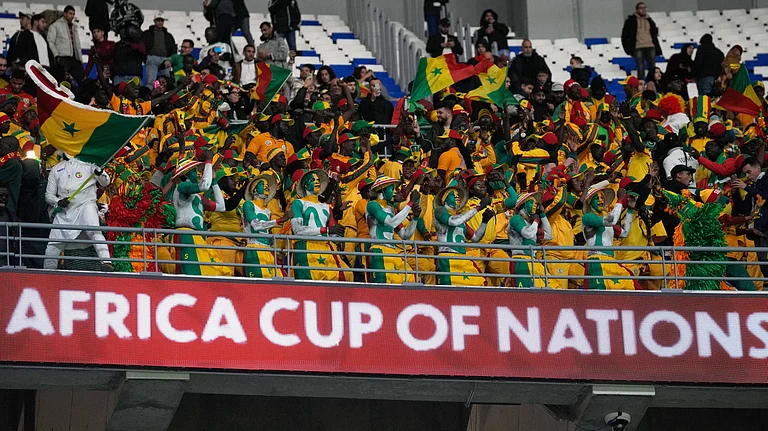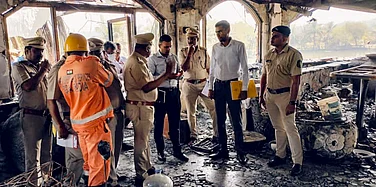MEGHALAYA presents a curious mirror image of the situation at New Delhi—inverted and miniaturised.The same vertical split in the House, the same wafer-thin majority, the same ambivalence. Even the BJP figures here—it made a stunning debut by winning three assembly seats. But, in a role reversal, it plays one of the small fringe groups whose leaning makes the crucial difference in a hum-dinger. The key protagonist is more familiar: Brington Buhai Lyngdoh, the grand old man of Khasi politics, who has staged a comeback after 15 years.
The loser, as of now, is S.C. Marak of the Congress, who went into this election after five years as chief minister. He was sworn in chief minister this time as well—on February 28—but stepped down on March 10 after his party's candidate for the Speaker's post lost the election by a single vote. Hours after Marak quit, Governor M.M. Jacob asked Lyngdoh, leader of the United Democratic Party (UDP), to take over. The Congress could get only 25 seats while the Opposition UDP, a motley collection of regional parties, won 20 seats on its own. So, the key to the formation of any
government were the smaller regional groupings. Accordingly, both the parties began wooing MLAs of the HSPDP (Hill State Peoples' Democratic party)—which fought the election on the plank of working for the creation of a separate Khasi state—the People's Democratic Movement (PDM), both with three seats each, and six Independents.
The UDP, determined to oust the Congress, had unexpected support from the BJP—all three candidates have been given ministerial berths in Lyngdoh's ministry. With the BJP set to form the government at the Centre, this sop would go down well with the national leadership and thwart its dismissal.
The BJP's debut apart, political analysts in the state were perturbed over the blatant divide among the parties along tribal lines. The state, which can be distinctly divided into three regions, Khasi Hills, Garo Hills and Jaintia Hills, sees the Congress as the party of the Garos—Marak is a Garo—whereas the regional parties are strongest in the other two regions. In fact, the Congress was wiped out in the Jaintia Hills this election. In its 25 years of existence, Meghalaya has been ruled for 20 years by a Garo chief minister. The Khasis—Lyngdoh belongs to this tribe—regard themselves as more advanced than the Garos and resent this. This Garo-Khasi divide has come into play in a big way this time. Says Manas Choudhury, owner-editor of the influential The Shillong Times. "This political divide on ethnic lines does not augur well for the state, already besieged as it is with tribal/non-tribal conflict." He has a point.
Over the past decade, clashes between tribals and non-tribals have increased leading to heightened tensions. The new cleavage between the state's two major communities is likely to aggravate the situation. In fact, the day the Marak government was sworn in, efforts were made by UDP leaders and its likely allies to play up this sentiment.
Governor Jacob, going by the convention of inviting the single largest party to form the government, asked Marak to take over and prove his majority within a fortnight. But on the day of the swearing-in itself, signs of trouble were apparent as the doughty 76-year-old Lyngdoh paraded 32 MLAs (a clear majority in a House of 60).
Lyngdoh's victory may be short-lived though, given past history in Meghalaya. Although there have been five assemblies since 1972, there have been 12 governments. Marak, whose nominee Surjit Marak lost the Speaker's election, vows to get back into the saddle "shortly." The next few months would be a test for Lyngdoh—he seeks a vote of confidence on March 20. Only time will tell whether he will last longer than his earlier stints—for two years between 1979 and 1981 and barely three weeks in March 1983.






















